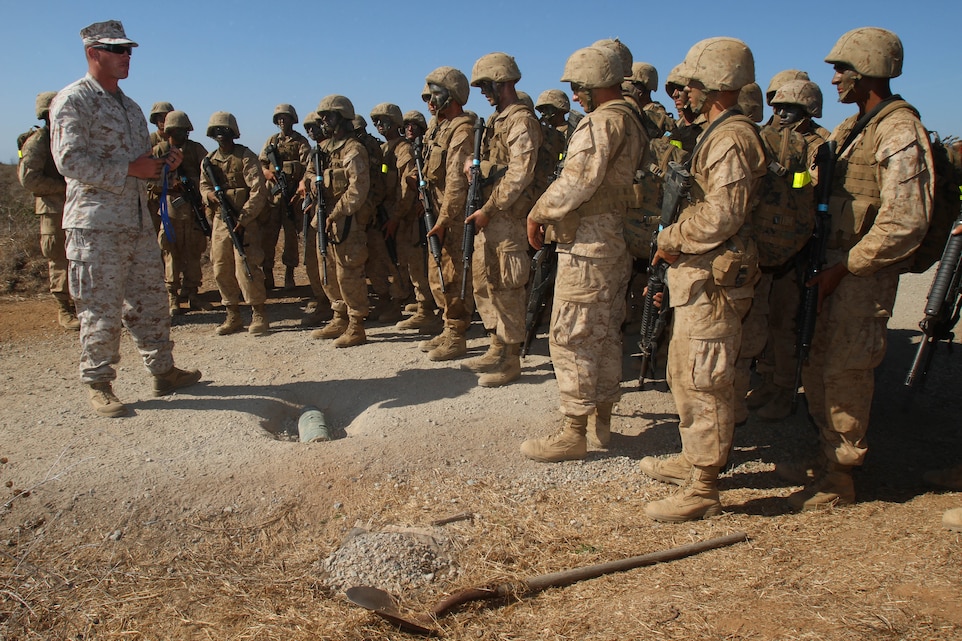San Diego -- As the fight against terrorism continues, Marines in country are still being challenged with facing Improvised Explosive Devices. The battle against unconventional warfare has taken a toll on U.S. troops, another reason why recruits are preparing now in recruit training.
During the Crucible, a 54-hour long, culminating exercise in recruit training, recruits of Company M, 3rd Recruit Training Battalion, faced the John Quick trail aboard Edson Range, Marine Corps Base Camp Pendleton, Calif. Oct. 2.
The purpose of John Quick Trail, also known as IED lane, is to inform recruits of IEDs, how to identify and to help combat against them.
Before recruits began the training, they were first called to the position of attention and read a citation of Sgt. Maj. John H. Quick, a Medal of Honor recipient, for his gallantry as a sergeant during the Spanish-American War. Immediately after, they were then briefed on the event.
“We identify parts, such as key components whether they’re pressure plate, trip wire or command detonation,” said Sgt. Jack R. Thompson, field instructor, Weapons and Field Training Battalion. “We try to focus more on providing security and proper carries in case they should have to evacuate someone.”
Recruits split into columns of two and began to patrol along the lane, as they kept an eye out for indicators. Simulated IEDs were staged throughout the half-mile lane to test recruits on the proper procedures when encountering one.
“There is no set course to teach us about IEDs that helps us teach this class,” said Sgt. Chad M. Hullinger, field instructor, WFTBn. “It’s learned mostly through experiences and what we can take from EOD and engineers. All that information is accumulated and we give that to the recruits when they come through here.”
As recruits continued their patrol, shock struck them all when one of the simulated IEDs detonated. Powder covered the impact area. They were just hit. Instructors quickly identified recruits as casualties and left it up to recruits to evacuate them.
Once the scenario was finished, instructors then gathered recruits around and explained how recruits should have reacted and the procedures they should have taken. After a quick brief, they moved on and continued patrolling.
As Marines continue to encounter IEDs during their missions, instructors are constantly being updated on how IEDs can be identified and are constantly implementing those updates as often as possible, according to Thompson.
“This course is very proficient in teaching the basic things they need to know about IEDs and how to react,” said Hullinger. “I think most of the instructors agree this class is very important and very helpful.”
At the end of the course, recruits were provided the opportunity to ask any further questions they had. Although, recruits now have a better understanding of IEDs, they will be able to go further into the training once they reach School of Infantry where they are taught Marine Combat Training.
Crucible exposes recruits to simulated IEDs
By Cpl. Matheus J. Hernandez | Marine Corps Recruit Depot, San Diego | October 12, 2012
